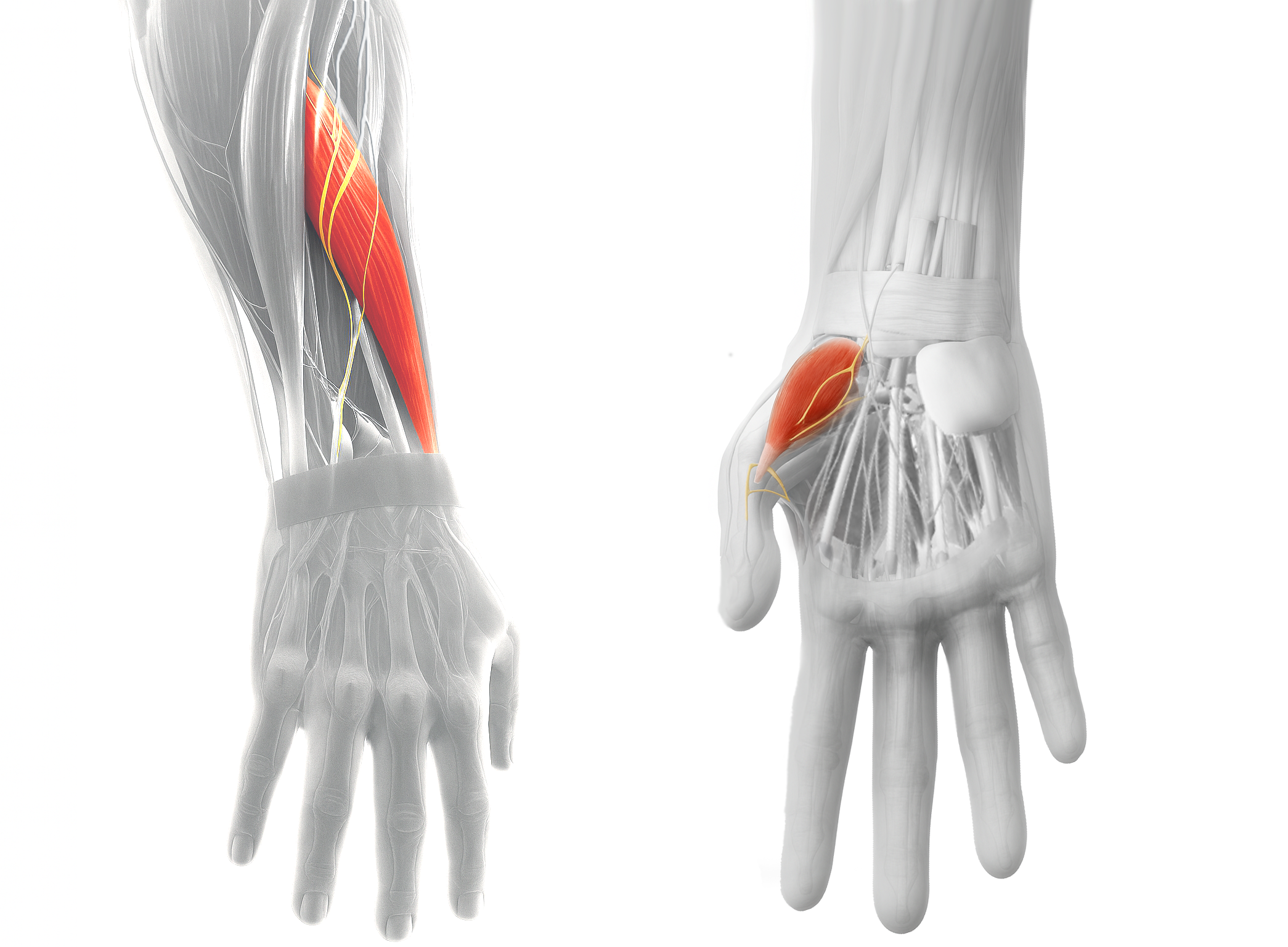FES Electrode Placements for Upper Limb Stroke Recovery Vol.2
Finger & Hand Activation
August 6, 2025
This second volume of our Functional Electrical Stimulation (FES) Placement Series shifts focus to the hand and fingers, crucial components for regaining functional independence after stroke. Grasping, releasing, pinching, and manipulating objects are often compromised in stroke survivors due to weakness, spasticity, or abnormal synergies in the hand. In this volume, we cover electrode placements for finger extension, finger flexion, thumb abduction, and thumb opposition.
*All anatomical references, illustrations, and example photos in this article depict the right upper limb (R arm) for consistency.
1. Finger Extension (Hand Opening)
Functional Purpose: Opening the hand to release objects, extend fingers, or prepare for grasp.
Target Muscles:
Extensor digitorum communis
Extensor carpi radialis
Radial nerve innervation
Placement: Place one electrode approximately 2–3 finger-breadths below the lateral epicondyle on the dorsal forearm, positioned over the common extensor muscle group. Position the second electrode further down along the forearm, just above the wrist joint, staying on the dorsal (back) side of the arm.
This placement stimulates simultaneous wrist and finger extension, allowing for coordinated hand opening. If extension is insufficient, consider:
Using smaller electrodes
Adjusting the distal pad more toward the hand
Targeting the extensor digitorum more precisely
Studies suggest that cyclic FES of the wrist/finger extensors helps reduce flexor spasticity and enhances voluntary hand opening over time. Always cue the patient to attempt active opening during stimulation for motor relearning.
2. Finger Flexion (Grasp)
Functional Purpose: Closing the hand to grasp objects like utensils, cups, or handles.
Target Muscles:
Flexor digitorum superficialis
Flexor digitorum profundus
Median and ulnar nerve innervation
Placement: Place one electrode on the volar side of the forearm, approximately 5–7 cm below the medial epicondyle, over the finger flexor muscle bulk. The second electrode should be positioned further down the forearm, closer to the wrist but not directly over the wrist crease.
This placement facilitates gross grasp by stimulating finger flexion. However, be cautious in cases of high flexor tone or clenched fist presentations; overstimulating finger flexors may worsen spasticity. Instead:
Prioritise extensors in early sessions
Use reciprocal inhibition techniques (alternating stimulation between flexors and extensors)
Encourage active squeezing to promote volitional control
3. Thumb Abduction
Functional Purpose: Opening the thumb away from the palm to widen the hand for grasp/release tasks.
Target Muscle:
Abductor pollicis brevis
Placement: Place one electrode over the thenar eminence, targeting the abductor pollicis brevis. The second electrode should be placed on the dorsal side of the wrist or the back of the hand.
Abducting the thumb expands the web space and is crucial for cylindrical or spherical grasp. Consider combining this stimulation with finger extension for full hand opening.
Use small electrodes to isolate the Abductor Pollicis Brevis without activating surrounding muscles. Encourage the patient to mimic the movement by attempting abduction during stimulation.
4. Thumb Opposition (Pinch & Fine Grip)
Functional Purpose: Rotating the thumb to touch the fingertips for tasks like pinching, buttoning, or writing.
Target Muscle:
Opponens pollicis
Placement: Place one electrode slightly deeper and more medial on the thenar eminence, targeting the opponens pollicis. The second electrode should be positioned on the dorsal wrist or at the base of the palm.
Thumb opposition is essential for precision grips, including tip-to-tip and lateral pinch. Position the active electrode carefully. Small adjustments can change the movement outcome (e.g., from abduction to opposition).
Small pads allow co-stimulation with index finger flexion for coordinated pinch training. Patients should practice pinching during stimulation to reinforce fine motor patterns.
The thenar muscles fatigue quickly, which limits session duration and requires monitoring.
Clinical Tips for Hand FES
Always synchronise stimulation with attempted voluntary movement
Tailor electrode size and spacing to the target muscle
Begin with lower intensities and adjust gradually
In patients with high tone, avoid over-recruitment of flexors
Combine FES with functional tasks (e.g., grasp/release objects) for task-specific practice
Use multi-channel setups for hand synergy (e.g., thumb + finger movement)
Effective stimulation of the hand and finger muscles can restore the foundation of daily activities like grasping, pinching, releasing, and manipulating objects. When integrated with patient intention and task-specific training, these placements can help reshape motor pathways and restore confidence in hand function.


















